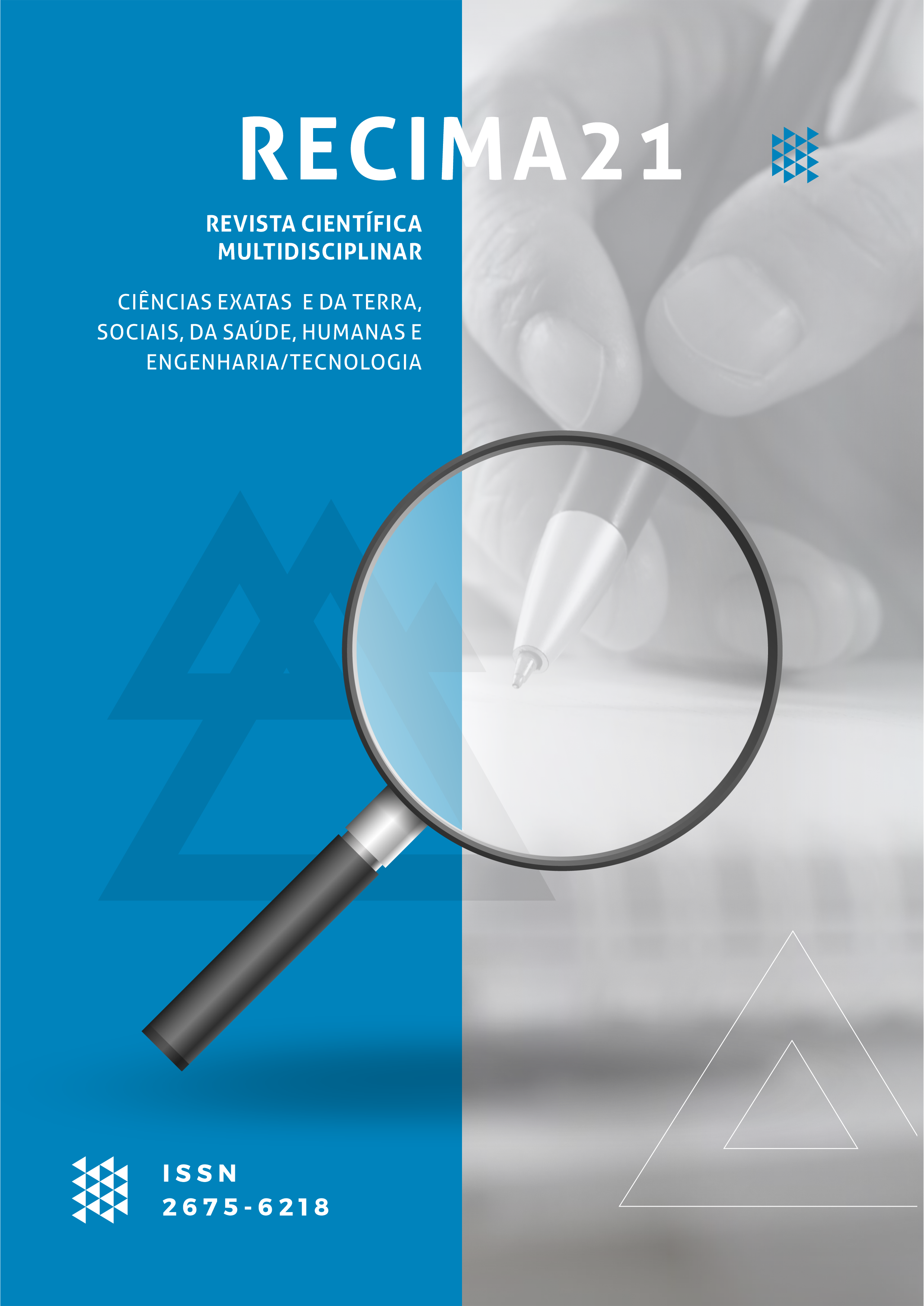GENERAL CHARACTERISTICS OF THE MAIN SOILS OF THE SEMIARID REGION
DOI:
https://doi.org/10.47820/recima21.v3i10.1964Keywords:
Chemical attributes; Agriculture; Nutrition.Abstract
The soils located in semi-arid and arid regions were, for a long time, considered unviable for agriculture and, consequently, excluded from economic use. However, a large part of the human population needs them to be incorporated into the productive process. The Brazilian tropical semi-arid region presents a variety of landscapes and environments that should be highlighted as one of the most outstanding characteristics of the region, which makes generalizations difficult when discussing several themes, including soils. In view of this complexity of landscapes, one must consider that soil, vegetation and climate coexist in a dynamic equilibrium, which can be altered by land use change. Current knowledge of soils is an important element for managing water resources, expressing the genetic potential of species, minimizing the degradation of natural resources and maximizing the potential of the climate factor, acting as a component of transformation, reorganization and sustenance of economic, social and cultural activities in rural areas. Soil is not just its mineral particles, but a set composed of minerals, chemicals, organic matter, living organisms, water, and air, whose balance is essential for vital processes and reflects on the productive potential and agricultural sustainability. It is of fundamental importance to elaborate a description of the main soils of the semi-arid region, including mineralogical information, chemical and physical aspects, morphological, addressing aspects of classification, potentialities, limitations and fertility. Also, it is important to emphasize the complex of causes and effects of the transformation of soil quality standards influenced by management.
Downloads
References
EMBRAPA. Sistema Brasileiro de Classificação de Solos. 2. ed. Rio de Janeiro: Embrapa Solos, 2006. 306 p.
JACOMINE, P. K. T.; SILVA, F. B. R.; FORMIGA, R. A. Levantamento exploratório de reconhecimento de solos do Estado do Rio Grande do Norte. Recife, 1971. 531 p. (DNPEADPP. Boletim Técnico, 21 – SUDENE-DRN. Série Pedologia, 9).
JACOMINE, P. K. T. Solos sob Caatinga: características e uso agrícola. In: ALVAREZ, V. H.; FONTES, L. E. F.; FONTES, M. P. F. O solo nos grandes domínios morfoclimáticos do Brasil e o desenvolvimento sustentado. Viçosa, MG: SBCS, 1996. p. 95-133.
RIBEIRO, M. R.; SAMPAIO, E. V. S. B.; GALINDO, I. C. L. Os solos e o processo de desertificação no Semiárido brasileiro. Tópicos em ciência do solo, Viçosa, MG, n. 6, p. 319- 412, 2009.
Downloads
Published
How to Cite
Issue
Section
Categories
License
Copyright (c) 2022 RECIMA21 - Revista Científica Multidisciplinar - ISSN 2675-6218

This work is licensed under a Creative Commons Attribution 4.0 International License.
Os direitos autorais dos artigos/resenhas/TCCs publicados pertecem à revista RECIMA21, e seguem o padrão Creative Commons (CC BY 4.0), permitindo a cópia ou reprodução, desde que cite a fonte e respeite os direitos dos autores e contenham menção aos mesmos nos créditos. Toda e qualquer obra publicada na revista, seu conteúdo é de responsabilidade dos autores, cabendo a RECIMA21 apenas ser o veículo de divulgação, seguindo os padrões nacionais e internacionais de publicação.













